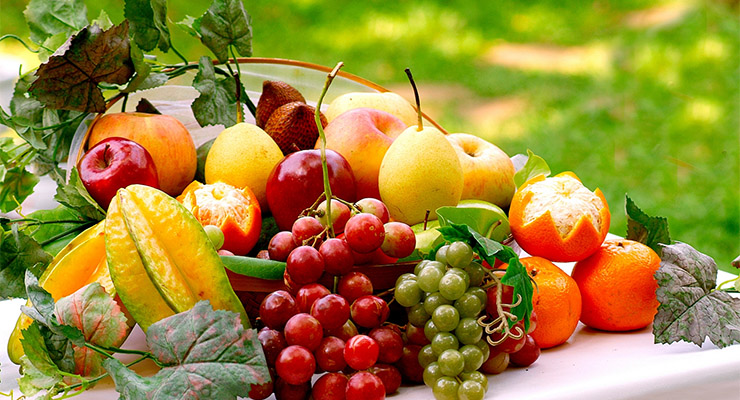Recent news (Blog)
Reduce the risk of cancer eating fruits
- Hits: 3492
San José, Costa Rica. July, 2015.
 According to data from WHO, the insufficient consumption of fruits and vegetables is one of the 10 risk factors of mortality on a world scale and it is calculated that it causes approximately 19% of gastrointestinal cancers, 31% of ischemic cardiopathies and 11% of the cerebrovascular accidents.
According to data from WHO, the insufficient consumption of fruits and vegetables is one of the 10 risk factors of mortality on a world scale and it is calculated that it causes approximately 19% of gastrointestinal cancers, 31% of ischemic cardiopathies and 11% of the cerebrovascular accidents.
Every year, up to 1.7 million lives could be saved if there was an adequate consumption of this food. Fruits contribute fructose (fruit sugar) and fiber (except for strained juices, the fiber content of which is very low or null). The greater the content of fiber, the lesser the speed of sugar absorption. They are also a source of vitamins, minerals and phytochemicals, such as antioxidants and water.
According to Natalia Quirós Barrantes, nutritionist of the Clínica Bíblica Hospital, “the daily recommendation is of 2 to 3 portions, quantity that contributes, on average, 9 gr of fiber (up to 16 gr in case you select options with greater content), which should be supplemented with other sources: vegetables, whole cereals, beans, nut and seeds, in order to cover the recommendation of 25 gr of fiber per day”.
Each portion of fruit contributes 60 kcal to the body, in the same way as other foods. Their excessive consumption is associated with excessive intakes of calories and consequently the development of overweight and pathologies associated with this.
Examples of 3 daily portions according to the expert:
- 1 Gala apple + 1 medium banana + 1 cup of diced papaya
- 1 medium slice of pineapple + 1 orange with tow + 13 units (1 cup) of strawberries
- 1 medium slice of watermelon + 1 medium slice of melon or papaya + 1 tangerine
- 1 tablespoon of raisins + 6 jocotes + ½ glass of natural blackberry juice
- 2 passion fruits + 2 “manzanas de agua” or Malay rose apples + 1 cup of diced mango (with the skin)
[alert]
Super foods or functional foods have become more and more popular so they are easy to find in supermarkets, macrobiotic shops, agricultural fairs or exhibitions for organic products, and even the internet.
[/alert]
Of the common fruits in Costa Rica, the 10 densest ones in calories are (per 100g of edible fraction of food): dry coconut, dry figs, tamarind, passion fruit, banana, the common jocote, “caimito” or star apple, grapes, soursop and kiwi.
Whilst the 10 fruits with less calories are (per 100g of edible fraction of the food): lemon (juice), watermelon, the ”manzana de agua” or Malay rose apple, the “limón dulce” or sweet lemon, strawberries, melon, papaya, blackberries, green mango and red plums.
The moderate intake of fruits, as part of a varied and balanced diet, can result in benefits such as:
- Strengthen the intestinal flora
- Regulate appetite, sugar and triglycerides blood levels
- Reduce the absorption of cholesterol
- Prevent constipation (if their intake is accompanied with a sufficient quantity of water)
- Maintain an adequate control of diabetes
- Blood pressure treatment
- Reduce overweight
- Protect against the appearance of gallstones, and
- Reduce the production of gastric acid (beneficial in case of peptic ulcer).
“What is recommendable is to select whole fruits (with edible skins and seeds), to take advantage of the fiber instead of the sugary and strained juices. Phytochemicals are found in the skin such as the polyphenols of the skin of the Apple that reduces the risk of cancer and cardiovascular disease,” concluded the nutritionist.
For further information or for requesting medical attention, please call the number 2522-1000, or write to the email citas@clinicabiblica.com or contact us via chat at the website: www.clinicabiblica.com.

